Braze Content Cards are a turnkey solution for in-app messaging. They work by injecting a single JavaScript snippet into your app, configuring each card’s content through Braze's dashboard, and then they render as an iframe-based feed that users can dismiss. Marketers, product managers and engineers often use them to display promotional content, product updates, or transactional messages styled with Braze's default templates.
While the no-code iframe approach offers a quick way to get started, it often creates more problems than it solves. Teams report issues with Content Cards breaking their content security policies, requiring you to be less strict, adding 200-300ms to initial page load, and creating layout shift and UI jank when cards appear. The inability to customize beyond basic CSS overrides means your critical product notifications look like janky, third-party advertisements rather than native UI elements.
This guide examines modern alternatives that address these technical implications while maintaining the ease of use that make Content Cards appealing to many.
Why engineers are moving away from drop-in scripts
The web has changed over the past few years. Modern frameworks like React have taken over and are built around component-level control and composition patterns that work best with native components rather than DOM overlays injected by external scripts.
App performance budgets have become increasingly constrained as teams recognize that every 100 milliseconds of blocking JavaScript directly impacts conversion rates, making the removal of 30–50 KB particularly significant on mobile connections.
Additionally, user expectations of web apps is at an all-time high, and iframe-based or DOM overlay based solutions limit flexibility and customization, such that they can never truly feel like a part of the product.
A headless or component-centric approach like Knock addresses the need for a high-quality, native user experience while solving the complex infrastructure requirements of modern in-app notifications.
Top alternatives to Braze Content Cards
Knock
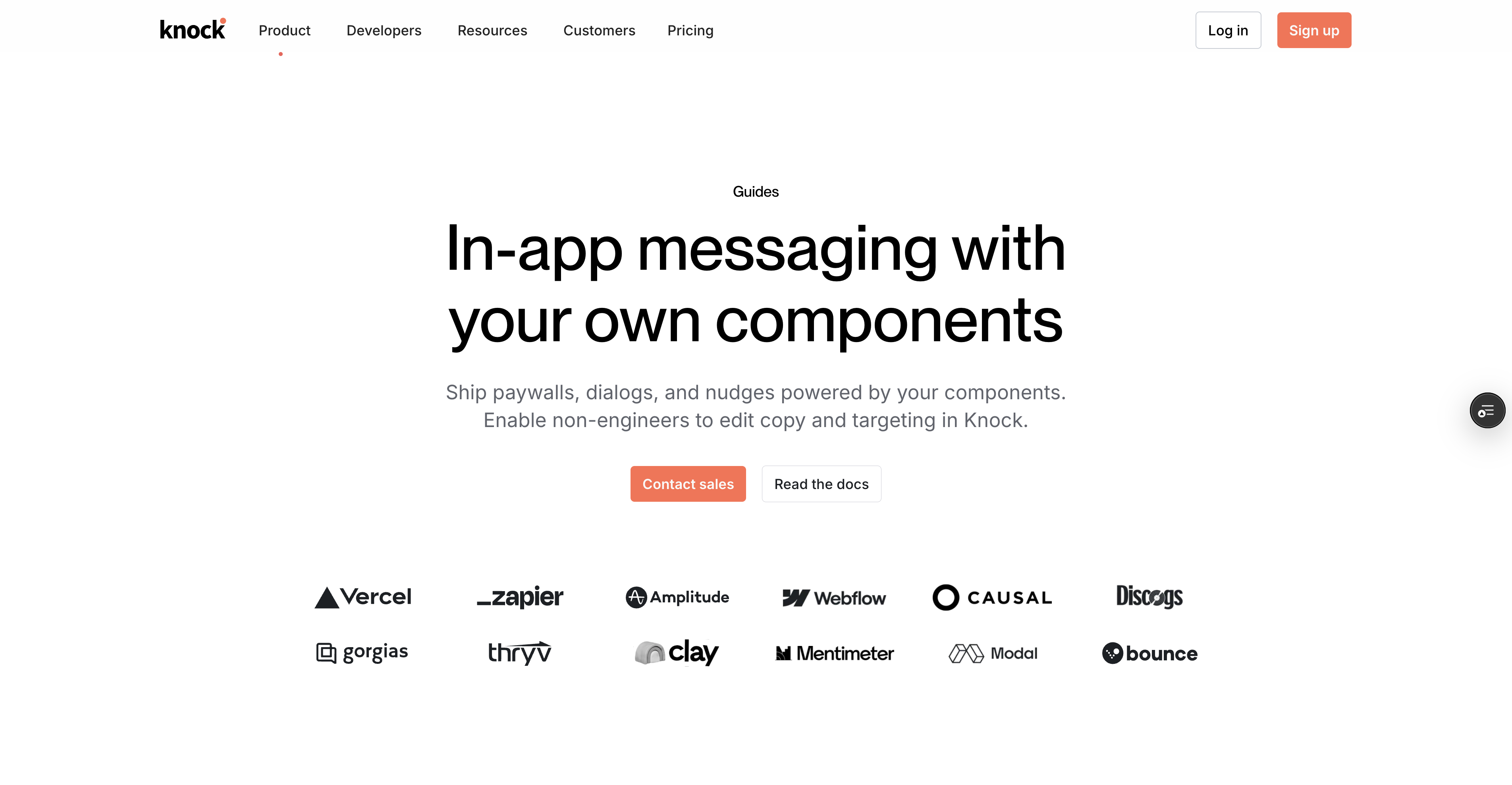
Knock is a comprehensive messaging infrastructure built by developers, for developers. It combines a powerful unified API with a dynamic workflow engine, enabling you to send product notifications and lifecycle messaging across channels including in-app, email, SMS, push, and chat apps like Slack, Teams, and WhatsApp.
Key in-app features:
- Headless API with WebSocket-powered real-time delivery
- Full targeting rules, ordering, and limits
- Uses native components, not iframes or script tags
- Multi-channel orchestration (in-app, email, SMS, push, Slack)
- Built-in user preferences and subscription management
- Developer-first with environments, git-like commits and observability
Pricing: Free tier available, usage-based pricing starts at $250/month for 50k notifications
Best for: Engineering teams building production-grade applications that need full UI control and high-quality user experience.
Pendo
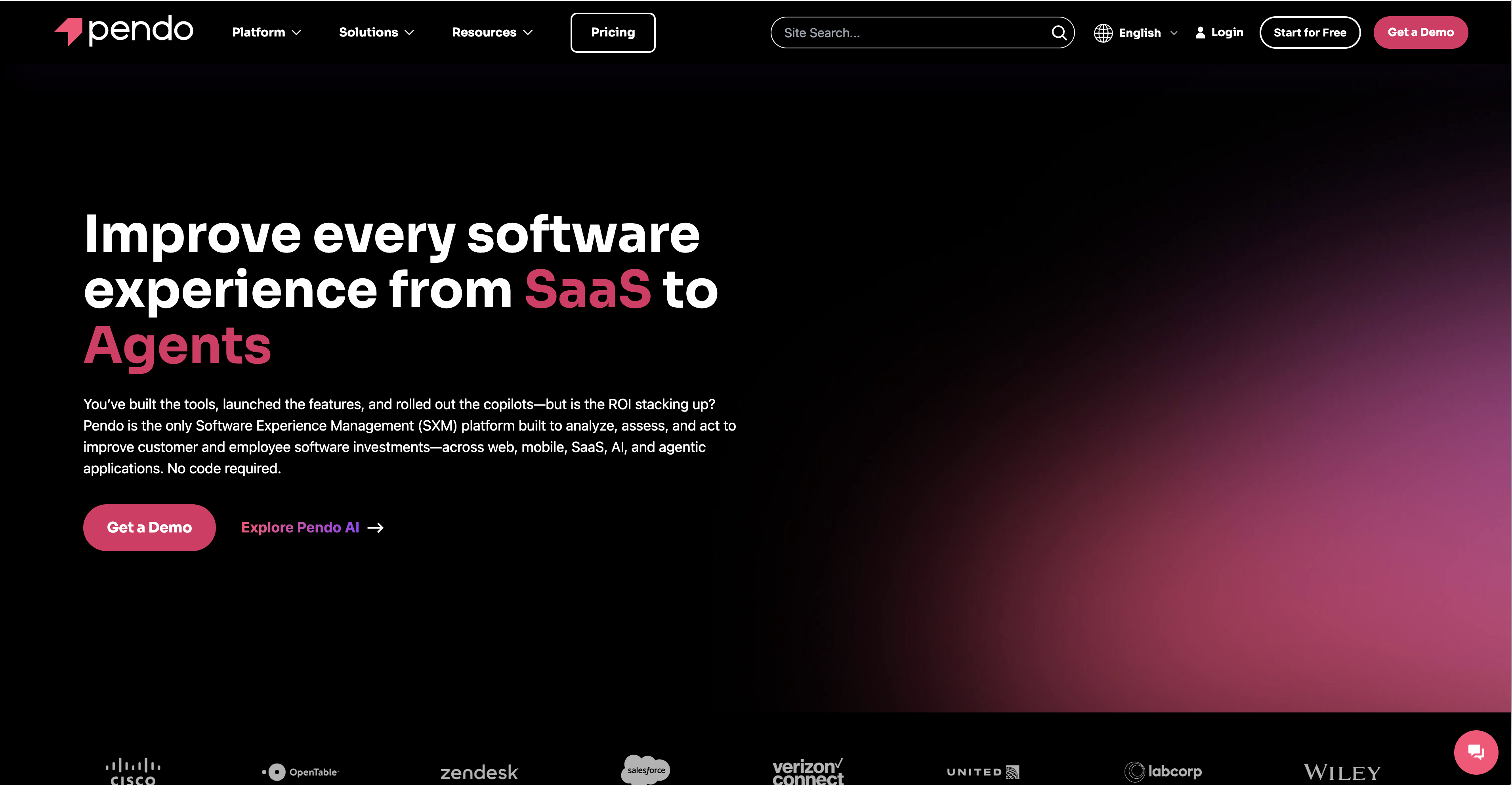
Pendo is a product experience platform that helps teams understand user behavior and guide users through applications. Its in-app messaging features render as overlays within your application through an injected JavaScript snippet, primarily focused on onboarding, feature adoption, and user education.
Key features:
- No-code guide builder with targeting rules
- Includes product analytics and user segmentation
- A/B testing for onboarding flows
- Some customability via HTML/CSS/JS within an iframe
- NPS surveys and feedback collection
Pricing: Must contact sales, typically pricing starting around $20,000/year for small teams.
Best for: Product teams wanting quick onboarding tours without engineering resources
Appcues

Appcues is a product adoption platform that enables non-technical teams to create in-app experiences without code. It injects a JavaScript snippet that renders flows as DOM overlays, allowing product managers and marketers to build onboarding tours, feature announcements, and surveys through a visual editor.
Key features:
- WYSIWYG flow builder for non-technical users
- DOM overlay rendering (not iframes)
- Event tracking and flow analytics
- Targeting based on user properties and behaviors
- Pre-built patterns for common use cases
Pricing: Starts at $249/month for 2,500 MAU, quickly escalating to $879/month for 10,000 MAU.
Best for: Growth teams running product experiments and feature announcements
Chameleon
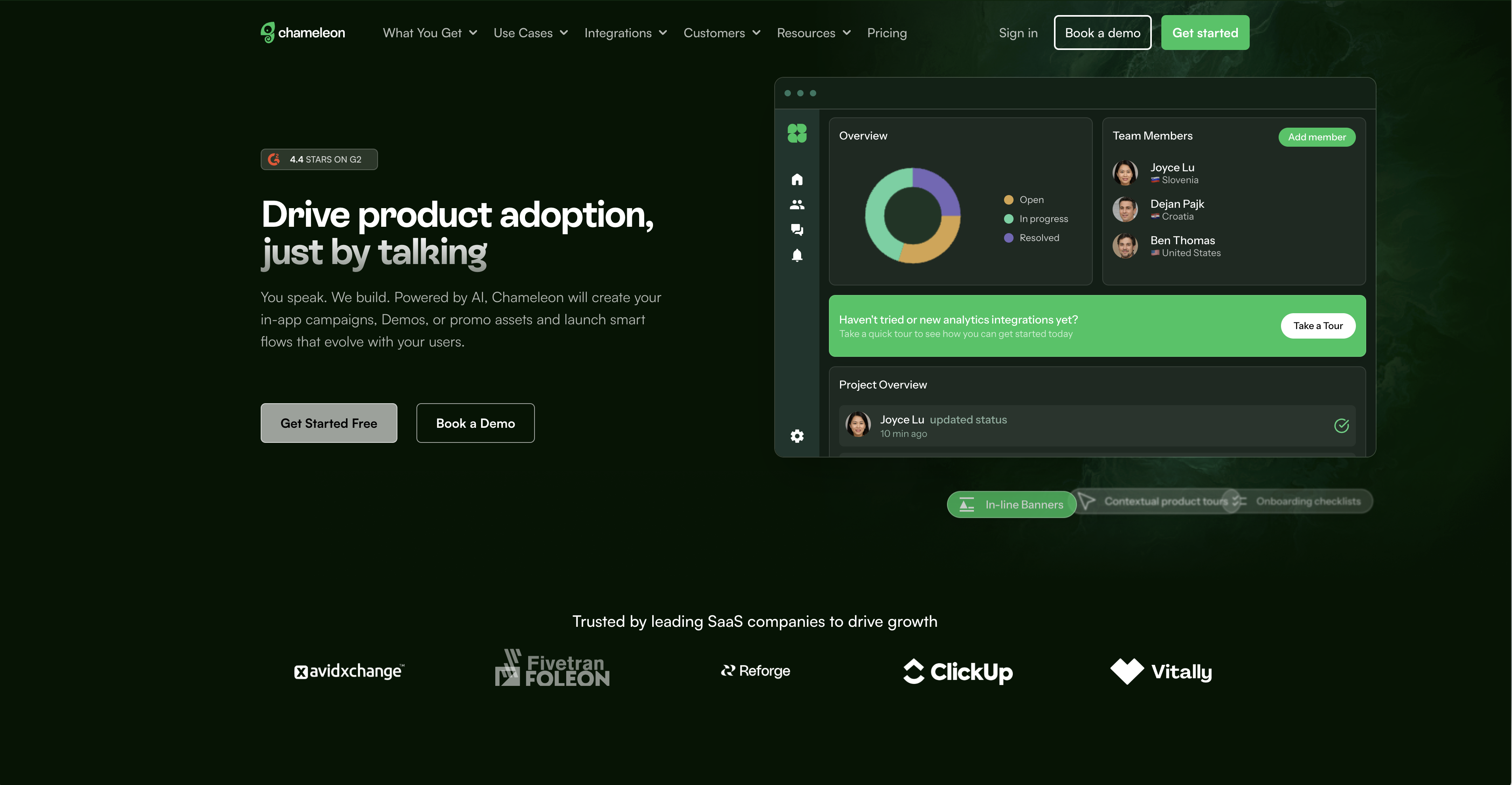
Chameleon is a product success platform that combines in-app messaging with user feedback tools. It provides both a JavaScript snippet for basic functionality and an SDK for programmatic control, rendering experiences as regular DOM elements within your application.
Key features:
- Programmatic trigger API for custom logic
- Regular DOM elements for easier styling
- SPA framework support
- Segmentation and personalization engine
- Rate limiting and frequency capping
Pricing: Starting at $279/month for up to 2,000 MAU
Best for: Product-led growth teams needing flexible targeting with moderate technical control
Customer.io
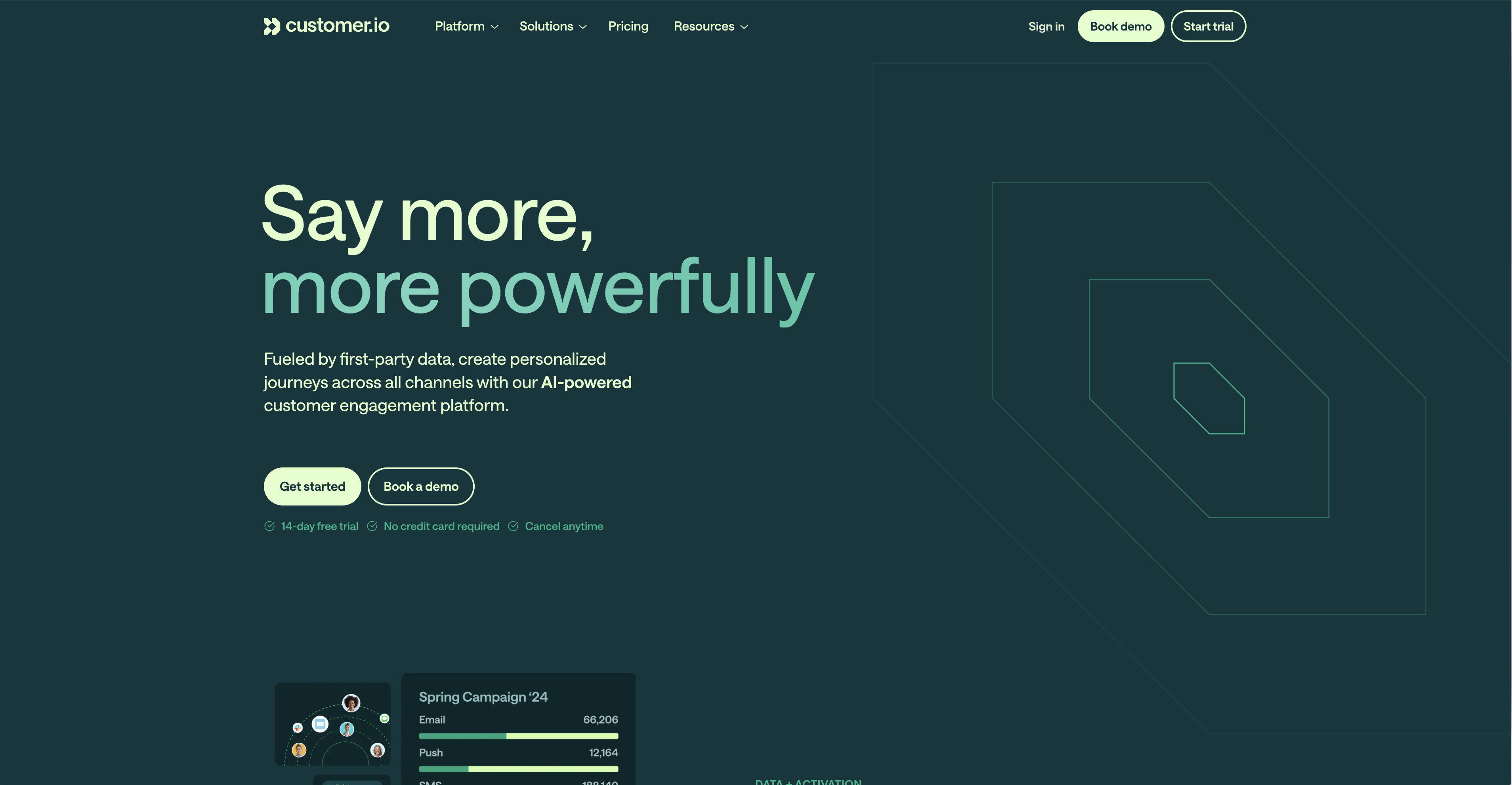
Overview: Customer.io is a messaging automation platform that started with email and SMS but recently added in-app messaging capabilities. Their Journeys engine orchestrates messages across channels, with in-app messages delivered through a lightweight JavaScript snippet that provides basic modal and banner components.
Key features:
- Unified platform for email, SMS, push, and in-app
- Journey builder with multi-channel orchestration
- Webhook and API triggers
- Basic modal and banner components
- Marketing-focused analytics dashboard
Pricing: Starting at $150/month for up to 12,000 profiles
Best for: Marketing teams already using Customer.io for email/SMS who want basic in-app messages
Frigade
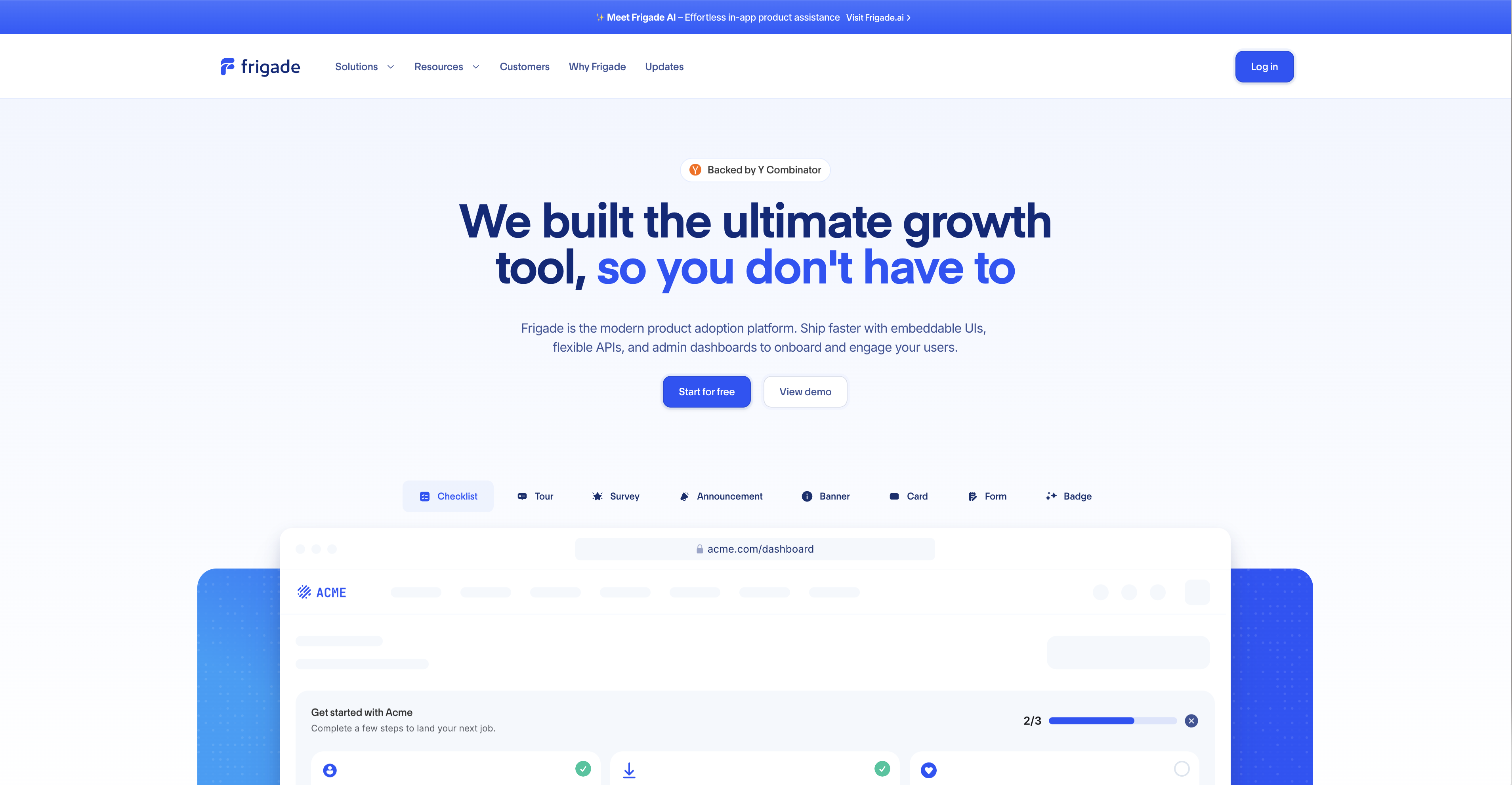
Overview: Frigade is a React focused product onboarding platform that provides components for building activation flows, checklists, and announcements. Unlike script-based solutions, Frigade ships as an NPM package with React components you import directly into your codebase.
Key features:
- Native React components with TypeScript support
- YAML or visual editor for flow configuration
- Built-in analytics and completion tracking
- Checklist and progress components
- User state synchronization
Pricing: Free for up to 1,000 MAU, then $50/month
Best for: React applications needing onboarding flows and activation checklists
Quick comparison
| Tool | Delivery model | UI control | Observability | Load time |
|---|---|---|---|---|
| Knock | Headless API + SDK | Full (React + other components) | Message-level logs & retries | Fast |
| Pendo | Snippet + iframe | Low | Good, UI-centric | Slow |
| Appcues | Snippet | Medium | Basic dashboards | Slow |
| Chameleon | Snippet + SDK | Medium | Decent | Medium |
| Customer.io | Snippet | Low | Journey analytics | Medium |
| Frigade | React SDK | Full (React components) | Flow-level analytics | Fast |
How to choose the best Braze content card alternative
While plug-and-play tooltip tours from Pendo or Appcues remain viable options for MVP implementations, core product notifications that carry transactional weight require you to treat in-app messaging as an integral part of your codebase.
Knock currently leads this category of headless notification infrastructure and multi-channel messaging, with Chameleon offering a compelling alternative for teams comfortable with a hybrid approach that combines a snippet with SDK functionality.
The evaluation process should center on balancing the level of control your engineering team requires against the amount of platform functionality you're willing to outsource, keeping in mind that profiling network performance remains essential regardless of which solution you choose.